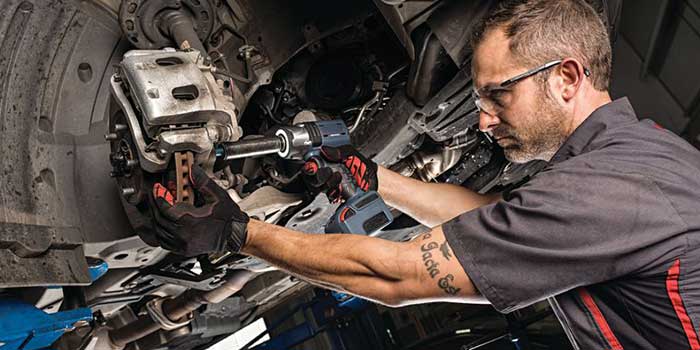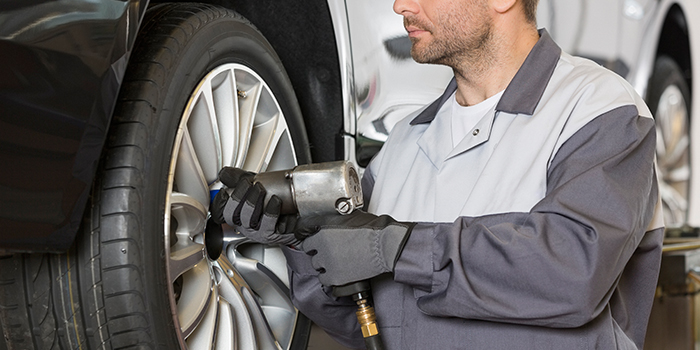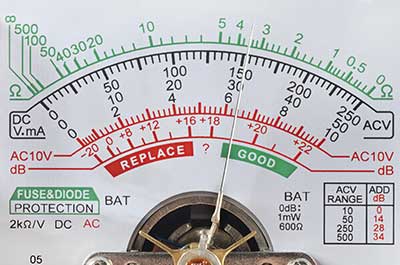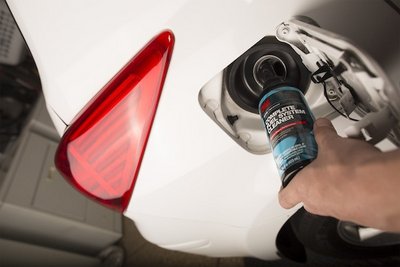Is The Time Right For Cordless Power Tools?
Thanks to advances in long life, high power lithium-ion battery technology, smart power management and more powerful and efficient brushless electric motors, many brand name cordless power tools can now compete successfully with most pneumatic tools.

Air Update: Maintaining Your Pneumatic Tools
Professional-grade air tools can be very expensive and represent a sizable investment. But the tools can last many years with the proper care – and a clean air supply.

Liquid Tools: Choose Your Maintenance Chemicals Based On The Application
The shelves in most parts stores are stocked with an abundance of aerosol maintenance products – everything from cleaners to lubricants. The huge selection of products can be overwhelming, leading to confusion about which product you should purchase for a given application.

GOOD or REPLACE? Testing Today’s Batteries
A weak battery, or one that is rundown, may not deliver enough amps to crank the engine when temperatures plunge and the oil thickens. While cold weather can be hard on batteries, so can hot weather because it increases water loss from the electrolyte inside the battery. That’s why batteries in hot climates usually don’t

Can Cordless Power Tools Replace Pneumatic Tools?
Until the advent of today’s high power lithium-ion battery packs and smart cordless power tools, cordless power tools have had minimal acceptance in the automotive service industry because they lacked the muscle and runtime required in a typical automotive repair shop environment. But all that has changed in recent years thanks to the development of high-amperage, long-life lithium-ion battery technology.

Specialty Chemicals Fix a Range of Issues
One of the hottest chemical categories these days is fuel cleaner additives. Contributing editor Larry Carley breaks down three types and recommends which ones work best for a variety of applications.

Intake Manifold Gaskets: A Service Rundown
Back in the days when most
Indirect Tire Pressure Monitoring Systems On Import Vehicles
Indirect Tire Pressure Monitoring Systems (TPMS) began making a comeback in 2011 on all Audi models. The highly popular Honda Accord switched to indirect TPMS for the 2013 model year. The 2013 Mazda CX-5 is now also using an indirect TPMS. Some of the VW Golf platform vehicles have switched to an indirect TPMS. Most of these models have the optional ABS and stability control system.
Indirect Tire Pressure Monitoring Systems Making A Comeback On Some Imports
Indirect Tire Pressure Monitoring Systems (TPMS) are the systems that do not have air pressure sensors inside the tires. Rather, they detect a low tire by comparing relative wheel speeds via the Anti-lock Brake System (ABS) wheel speed sensors. New systems are taking advantage of better wheel speed sensors and modules to make indirect systems work. Indirect TPMS began making a comeback in 2011 on all Audi models. The highly popular Honda Accord switched to indirect TPMS for the 2013 model year.
How Vehicle Software Is Changing The Stopping Game
There was a time when advancements in brake technology were entirely hardware based. The change from drum to disc brakes, the introduction of semi-metallic and ceramic pads, and the addition of power brakes as standard equipment were all changes achieved by redesigned and improved brake system components. Today, electronics is driving most of the advancements in braking technology.
Cabin Air Filter: The Unseen Automotive Filter
A new cabin air filter is something many motorists need, but often don’t know it. The cabin air filter (CAF) is not a well-known or well-publicized filter. Close to 90% of late-model cars and trucks now come factory-equipped with a cabin air filter, but the original filters in many of these vehicles have never been changed!
A/C Compressors Take A Pounding
The A/C compressor is a pump that compresses and circulates refrigerant within the A/C system. Some have pistons inside while others have rotating vanes on an eccentric or a pair of metal scrolls or spirals around an eccentric. Many late-model vehicles have “variable displacement” compressors that change the piston stroke to increase or decrease the volume of refrigerant flowing through the system. Some of these run continuously instead of cycling on and off like conventional A/C compressors.
